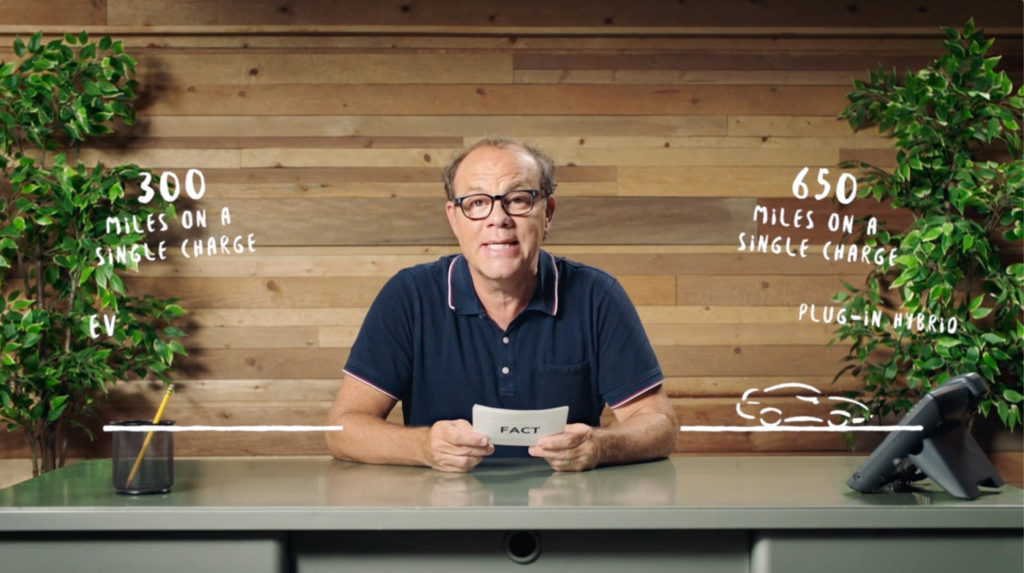Learn the Facts
We know you’ve got questions about making the switch to electric – fortunately, we have answers! Learn more about the types of electric cars on the market, how charging works, what incentives and rebates are available for you and more! It’s time to start your journey.
You're in Charge with Tom Papa: Episode 1
Why Did Comedian Tom Papa Decide to Drive Electric?
 Watch Video
Watch Video
Know the Differences Between Vehicle Types
The first thing to consider when buying an electric car is the type that is best suited for your needs. The technologies include: battery electric vehicles, plug-in hybrid electric vehicles, and fuel cell electric vehicles.
Battery Electric Vehicle

A battery electric vehicle is a car that is 100% powered by an electric motor. There is no gasoline required, and owners “fuel up” by plugging in overnight at home or to an expanding network of charging stations. Like a cellphone, the battery stores the charge to power the car when it is running. There are a variety of battery electric vehicles on the market, many of which can be driven between 200 and 330 miles on a full charge. “Refueling” times can vary – typically, 30 minutes for fast charging and 4 to 6 hours with Level 2, depending on the size and current depletion of the battery.
Plug-in Hybrid Electric Vehicle

A plug-in hybrid electric vehicle is a vehicle that is powered by a combination of an electric motor and a gasoline engine. Like a battery electric vehicle, the vehicle can be plugged in to charge and will run on the battery for some or all of your drive – from 15 to 60 miles. Unlike a battery electric vehicle, once the battery charge is depleted, the gasoline kicks in and the vehicle runs like a fuel efficient gas-powered hybrid car to extend the range of the vehicle. This makes the combined range from electricity and gasoline, 350-600 miles, comparable to a gas-powered car. Recharging the battery is completed easily overnight using either Level 1 (120V) or Level 2 (240V) charging, and a quick stop by the gasoline station can fill up the tank in about 5 minutes.
Fuel Cell Electric Vehicle

A fuel cell electric vehicle is powered by an electric drive motor and uses a fuel cell to convert hydrogen into electricity. Like a gas-powered car, they are capable of refueling in 3-5 minutes, but at a hydrogen dispenser instead of a gas pump. Driving range is comparable to gas cars, about 300-350 miles on each tank of hydrogen. Hydrogen fueling stations, however, are not yet widely available outside of California. These vehicles could be introduced in select northeast states if hydrogen refueling stations are built. FCEVs will be introduced in select northeast states once hydrogen refueling stations are built.
See how electric cars fit your lifestyle

Convenience
Simplify your routine with an electric car that recharges while you recharge, and with driving ranges that fit your lifestyle.

Affordability
Get information on incentives to purchase electric cars and the savings from reduced operating costs.

Technology
Learn more about the technological innovations “under the hood.”

Sustainability
See how smart choices now can make a better future.

The Fun Factor
Go electric for vehicle performance that makes the drive to work almost as much fun as the drive home.
Find the perfect car! Take our EV quiz
Interested in buying an electric car but aren’t sure which one? Let us help you find the choice that best fits your lifestyle with our EV quiz.

